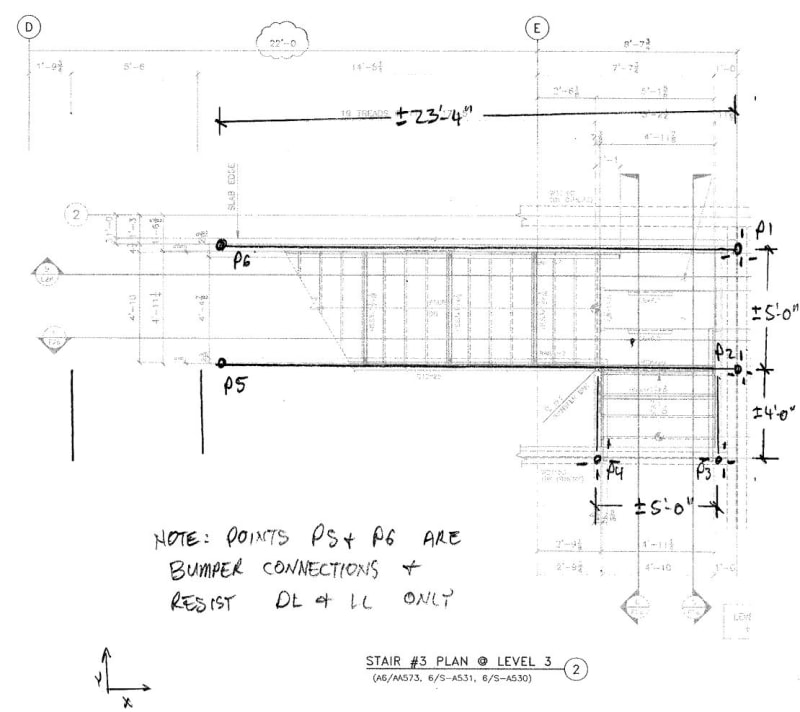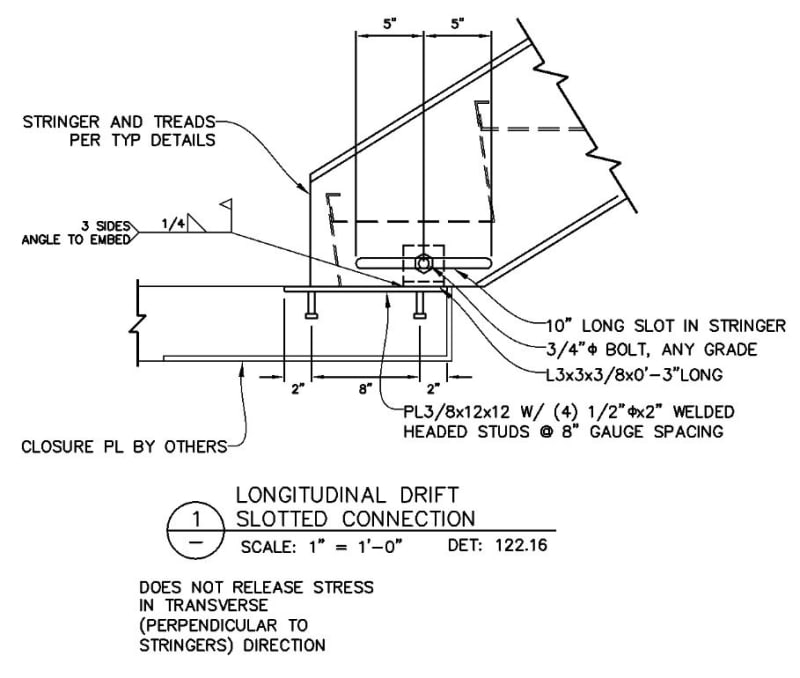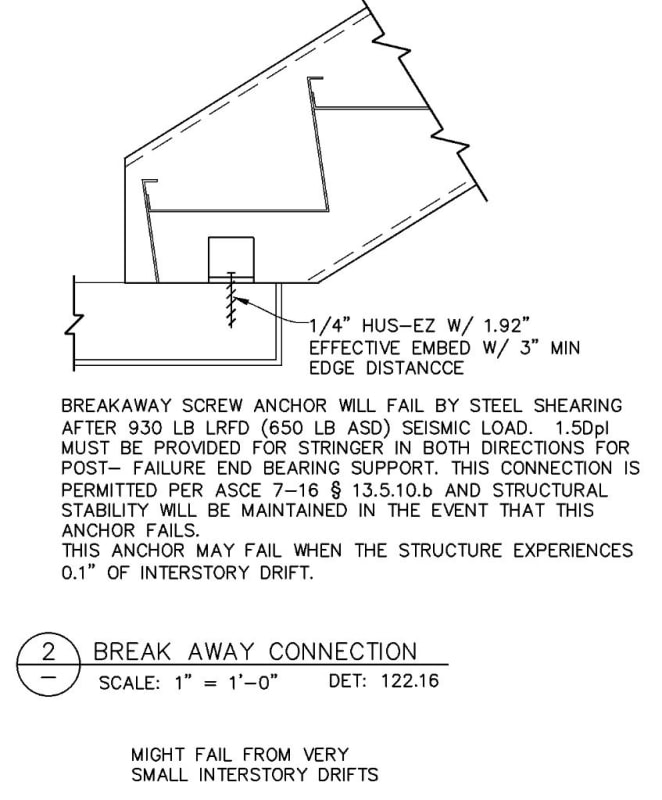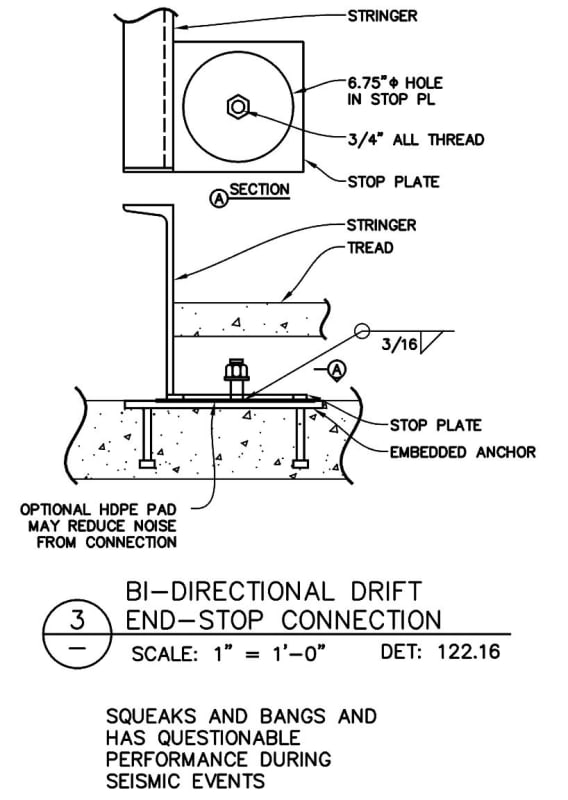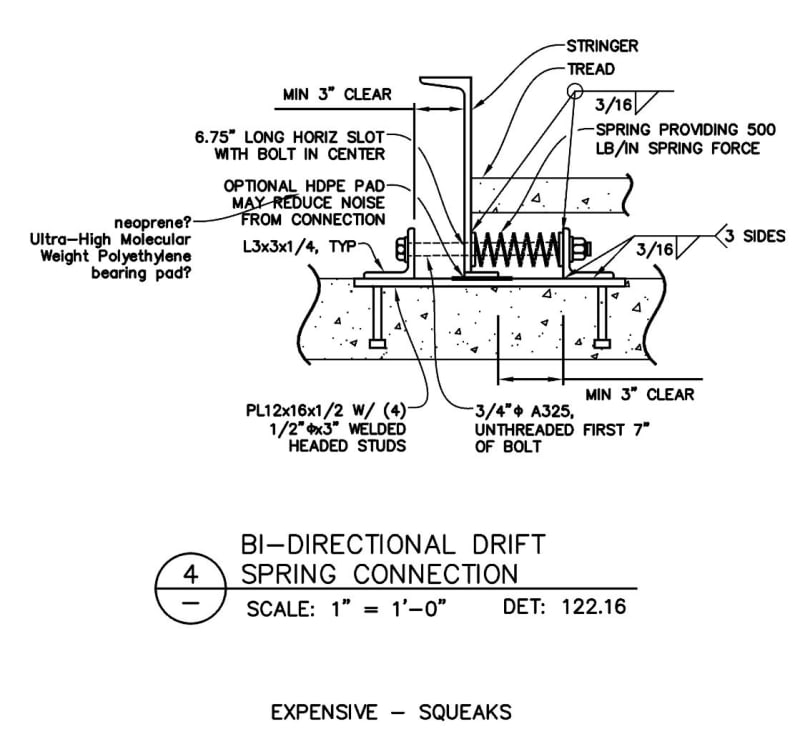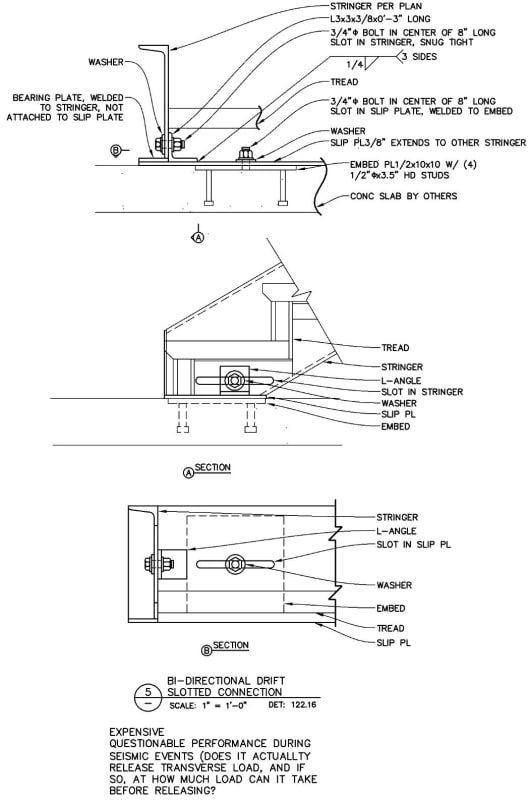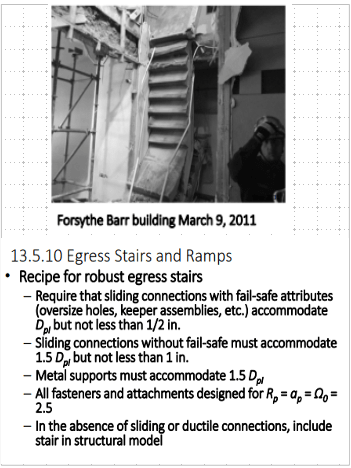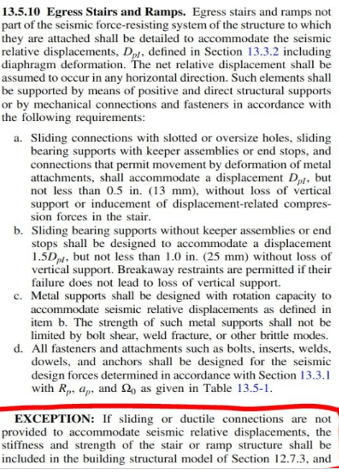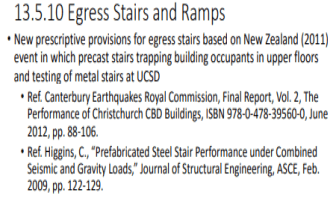dreber
Civil/Environmental
- Feb 9, 2011
- 105
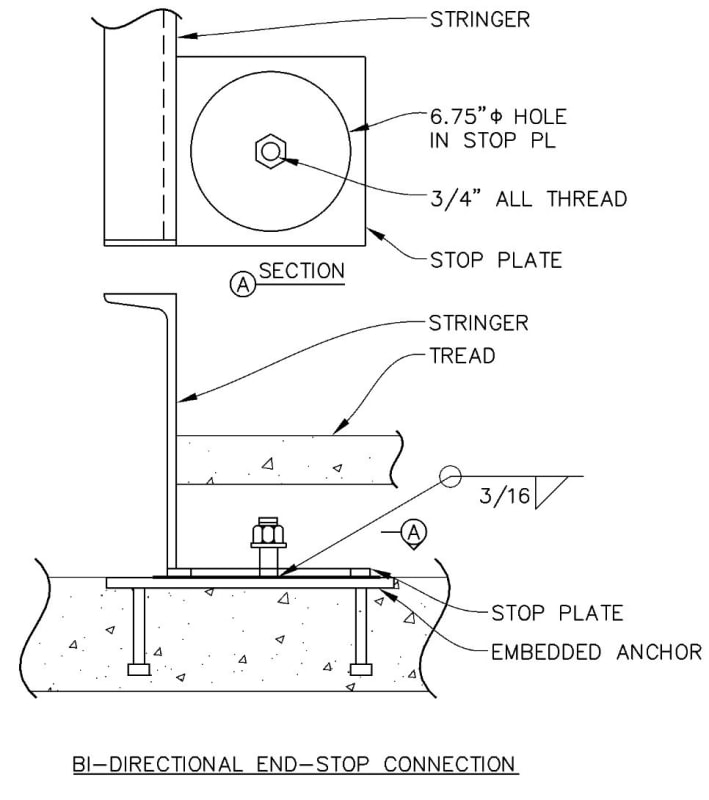
So in ASCE 7-16, there is a new requirement in § 13.5.10 “If sliding or ductile connections are not provided to accommodate seismic relative displacements [for stairs], the stiffness and strength of the stair or ramp structure shall be included in the building structural model of Section 12.7.3, and the stair shall be designed with Ωo corresponding to the seismic force resisting system but not less than 2.5”
This has put the requirement to ensure bi-directional drift connections on the shoulders of building designers, who are now writing these requirements into their contract documents.
As the stair designer, I'm happy to stamp a connection like the one above, since I will only be relying on it to resist vertical (dead and live) loads.
However, I'm afraid that since this connection isn't a firm fixed connection that the movements in the stairway, and any potential squeaking or banging noises that could arise now, will come back to haunt me when building occupants are unhappy with their stairway that appears to be moving every time the wind blows.
I think I prefer a connection like this, since it's a bit more "positively attached" but I'm not sure that it won't make any noise either.
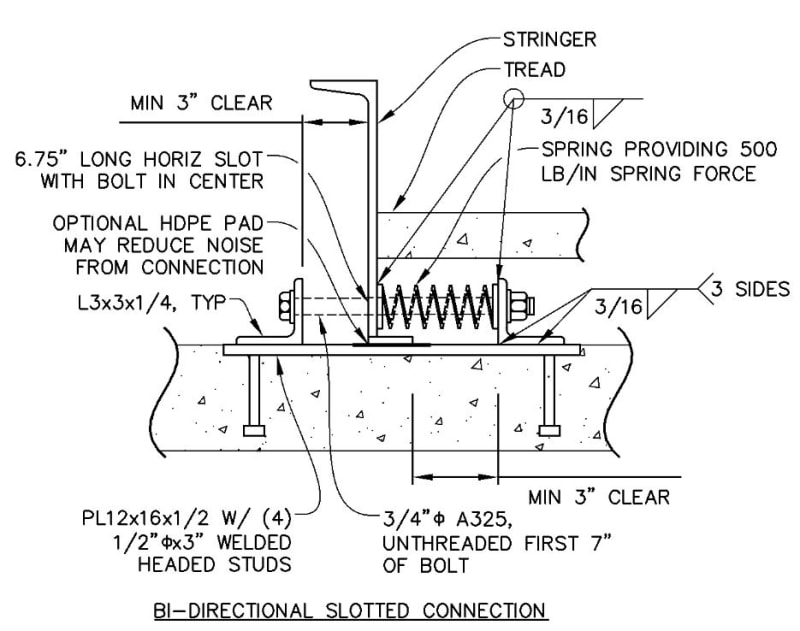
Keep in mind that one of these is obviously cheaper and my clients (AKA, my bosses) will strongly prefer the end stop connection to the bi-directional slotted connection.
=========================
David Reber

